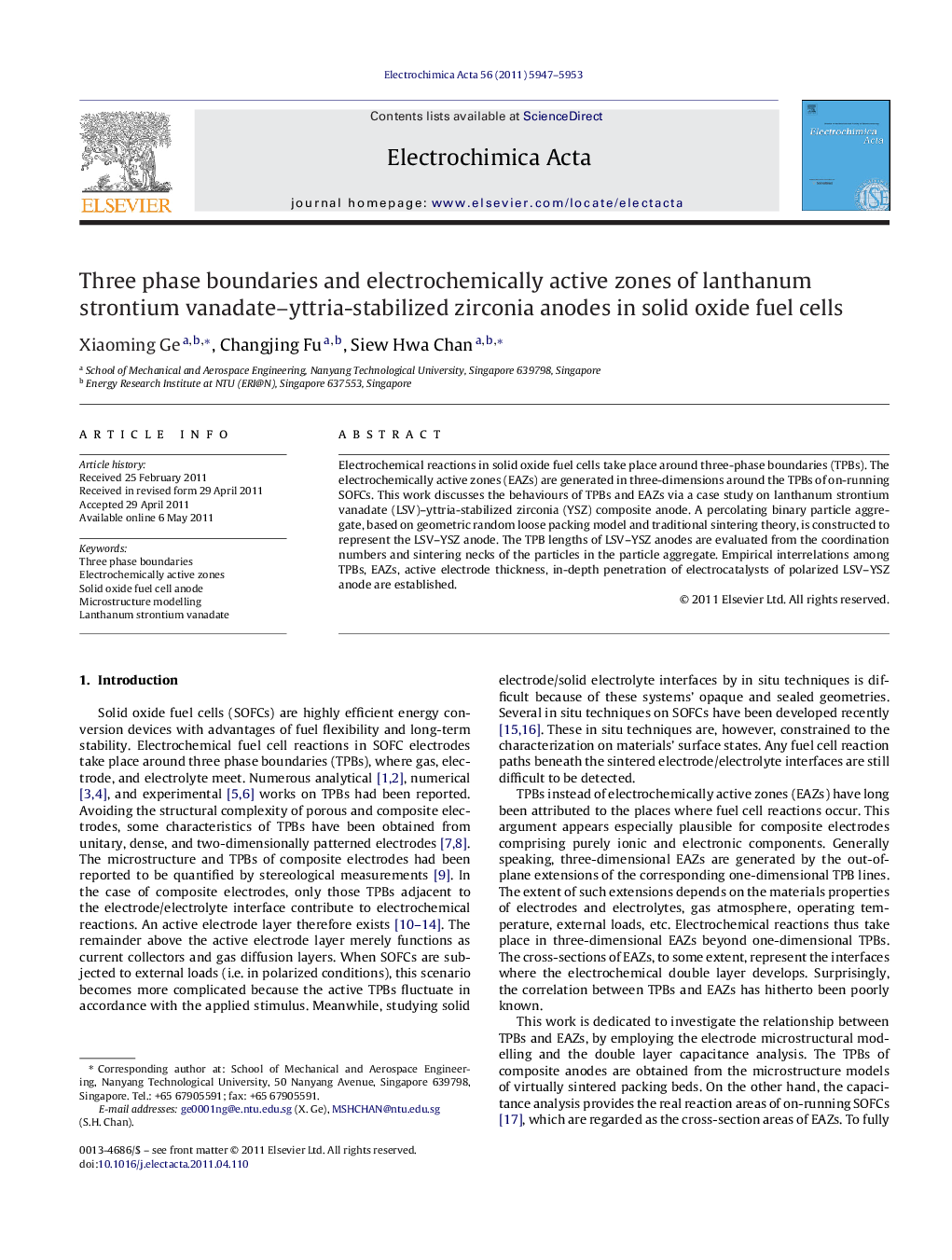| Article ID | Journal | Published Year | Pages | File Type |
|---|---|---|---|---|
| 189587 | Electrochimica Acta | 2011 | 7 Pages |
Electrochemical reactions in solid oxide fuel cells take place around three-phase boundaries (TPBs). The electrochemically active zones (EAZs) are generated in three-dimensions around the TPBs of on-running SOFCs. This work discusses the behaviours of TPBs and EAZs via a case study on lanthanum strontium vanadate (LSV)–yttria-stabilized zirconia (YSZ) composite anode. A percolating binary particle aggregate, based on geometric random loose packing model and traditional sintering theory, is constructed to represent the LSV–YSZ anode. The TPB lengths of LSV–YSZ anodes are evaluated from the coordination numbers and sintering necks of the particles in the particle aggregate. Empirical interrelations among TPBs, EAZs, active electrode thickness, in-depth penetration of electrocatalysts of polarized LSV–YSZ anode are established.
► The magnitude of three phase boundaries and electrochemically active zones in typical solid oxide fuel cell composite anodes. ► Correlations established between three phase boundaries and electrochemically active zones. ► Electrode microstructure constructed from a versatile packing and sintering model. ► Typical values of the active electrode thickness and in-depth penetration of electrocatalysts.
